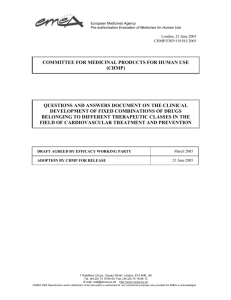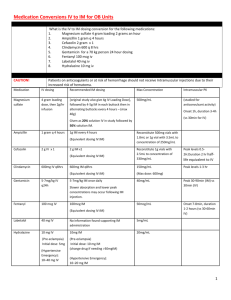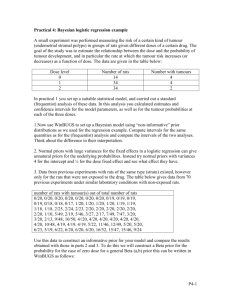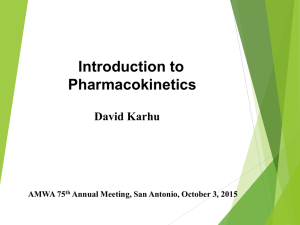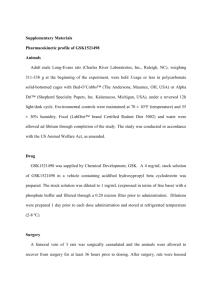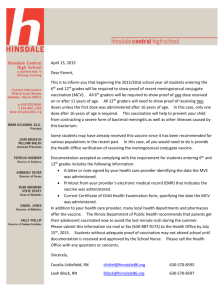In Vivo ADME Studies
advertisement
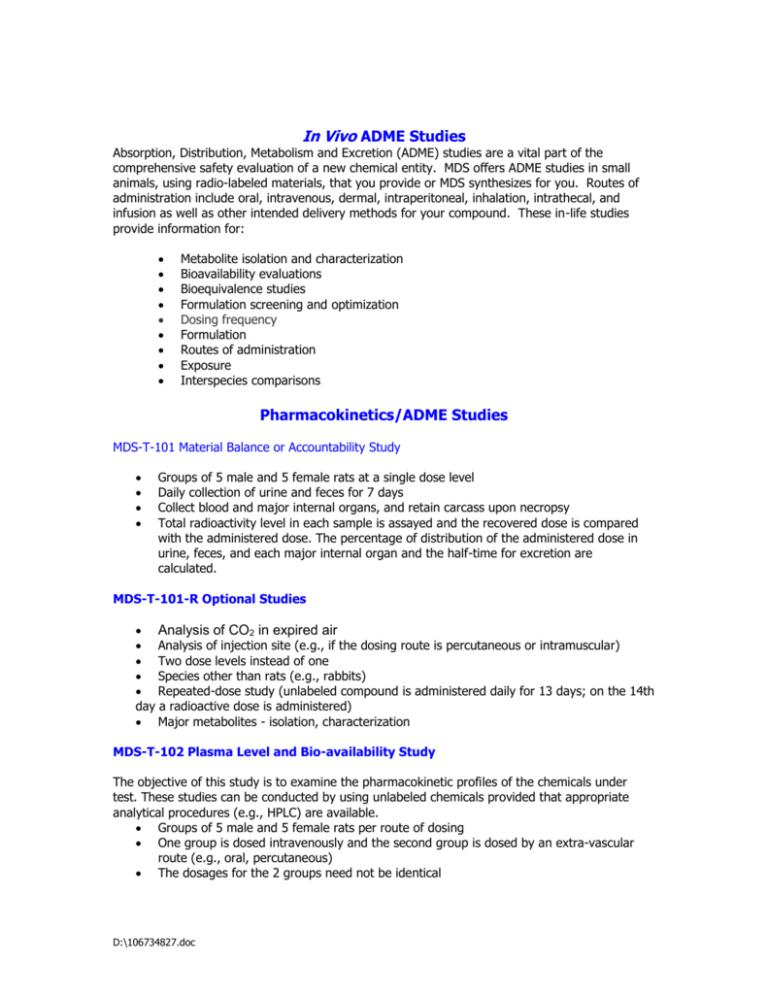
In Vivo ADME Studies Absorption, Distribution, Metabolism and Excretion (ADME) studies are a vital part of the comprehensive safety evaluation of a new chemical entity. MDS offers ADME studies in small animals, using radio-labeled materials, that you provide or MDS synthesizes for you. Routes of administration include oral, intravenous, dermal, intraperitoneal, inhalation, intrathecal, and infusion as well as other intended delivery methods for your compound. These in-life studies provide information for: Metabolite isolation and characterization Bioavailability evaluations Bioequivalence studies Formulation screening and optimization Dosing frequency Formulation Routes of administration Exposure Interspecies comparisons Pharmacokinetics/ADME Studies MDS-T-101 Material Balance or Accountability Study Groups of 5 male and 5 female rats at a single dose level Daily collection of urine and feces for 7 days Collect blood and major internal organs, and retain carcass upon necropsy Total radioactivity level in each sample is assayed and the recovered dose is compared with the administered dose. The percentage of distribution of the administered dose in urine, feces, and each major internal organ and the half-time for excretion are calculated. MDS-T-101-R Optional Studies Analysis of CO2 in expired air Analysis of injection site (e.g., if the dosing route is percutaneous or intramuscular) Two dose levels instead of one Species other than rats (e.g., rabbits) Repeated-dose study (unlabeled compound is administered daily for 13 days; on the 14th day a radioactive dose is administered) Major metabolites - isolation, characterization MDS-T-102 Plasma Level and Bio-availability Study The objective of this study is to examine the pharmacokinetic profiles of the chemicals under test. These studies can be conducted by using unlabeled chemicals provided that appropriate analytical procedures (e.g., HPLC) are available. Groups of 5 male and 5 female rats per route of dosing One group is dosed intravenously and the second group is dosed by an extra-vascular route (e.g., oral, percutaneous) The dosages for the 2 groups need not be identical D:\106734827.doc Blood is sampled at frequent intervals (e.g., 0.25, 0.5, 1, 2, 4, 6, 8, 12, 24, and 48 hr), and plasma levels of the chemical are assayed. The plasma- concentration-time data are analyzed to obtain the pharmacokinetic profile, including the area under the curve (AUC). Comparison of the AUCs after extra-vascular and intravenous dosing, after correcting for the dosage, provides a measure of bioavailability. Alternatively, if a radioactive chemical is used, comparison of the administered doses excreted in urine can be used to calculate the approximate bioavailability of the orally dosed chemical. MDS-T-102-R Optional Studies Species other than rats Plasma protein-binding study MDS-T-102 Pharmacokinetics Studies of Nucleotide Therapeutics We can conduct tissue distribution studies of nucleotide-based materials using quantitative polymerase chain reaction (PCR), capillary electrophoresis, or in situ hybridization methods. Studies are designed to fit the needs of each particular test article. D:\106734827.doc


